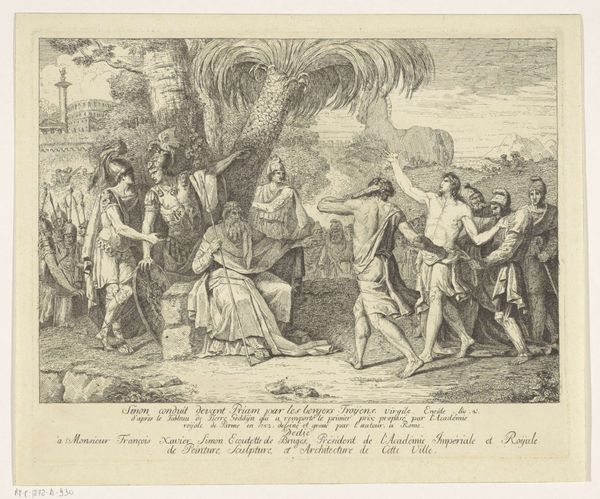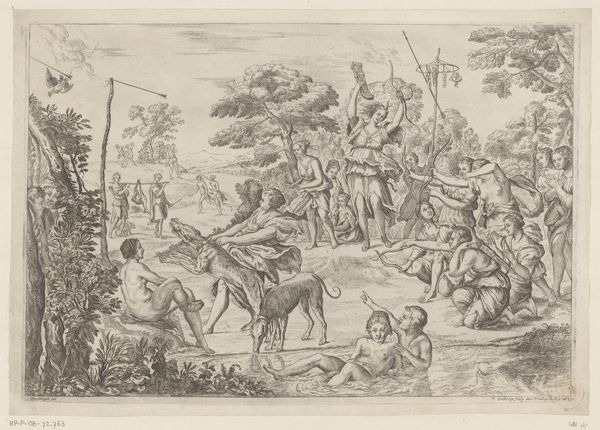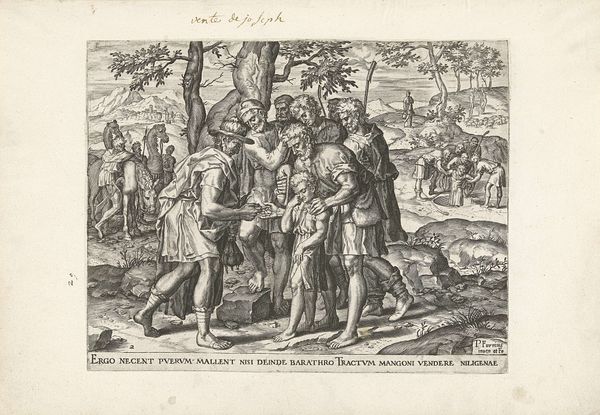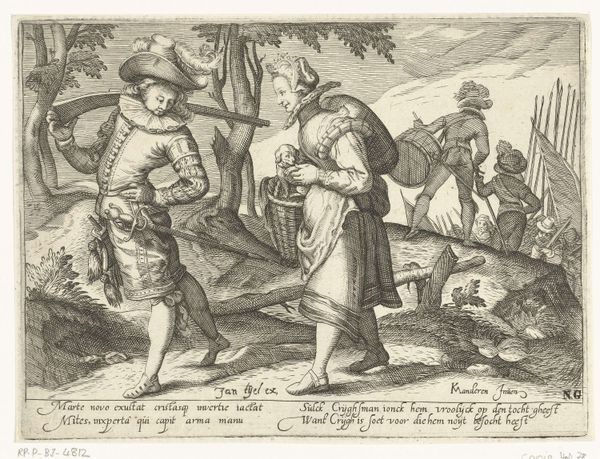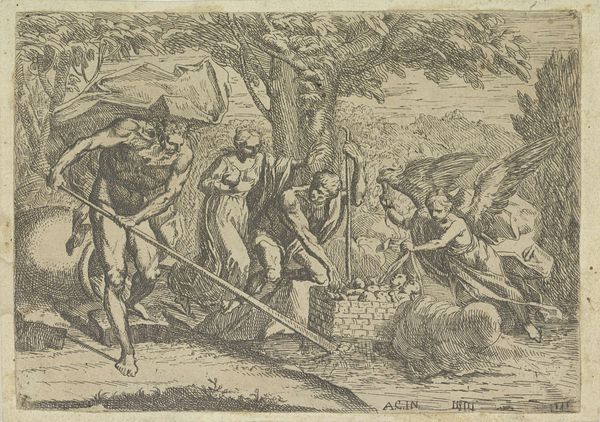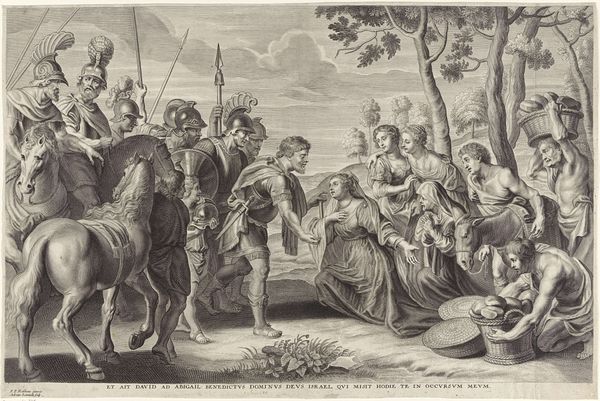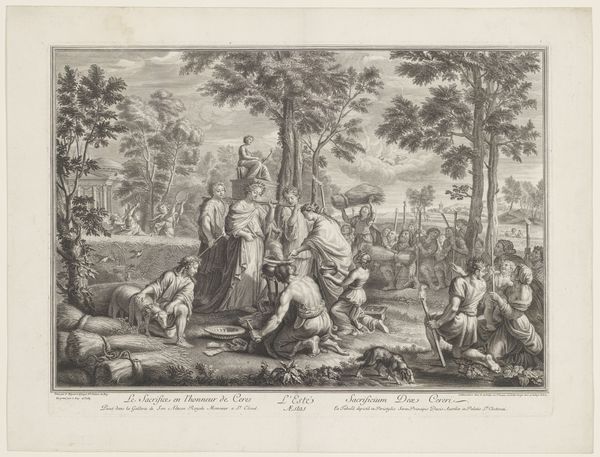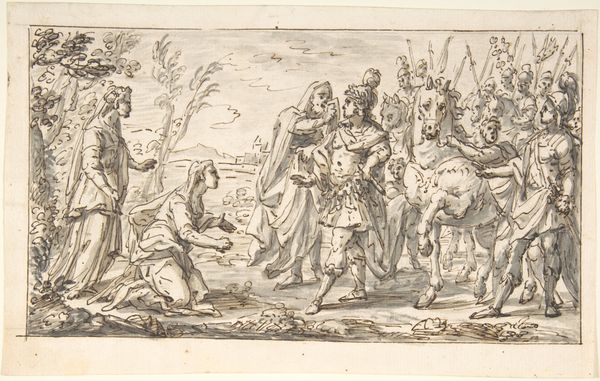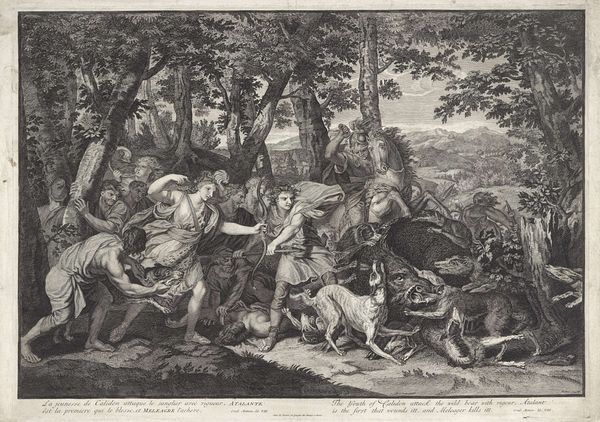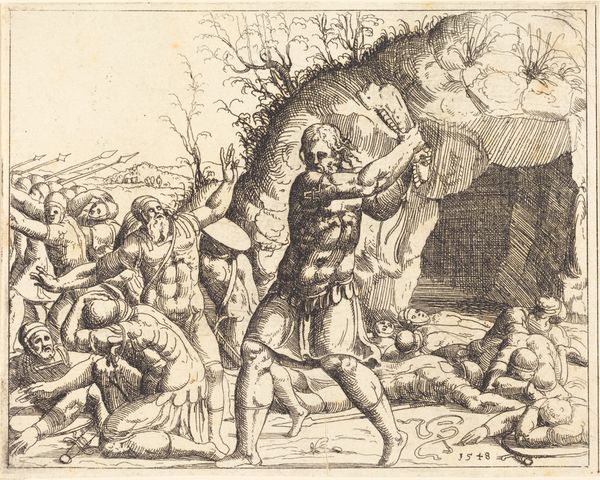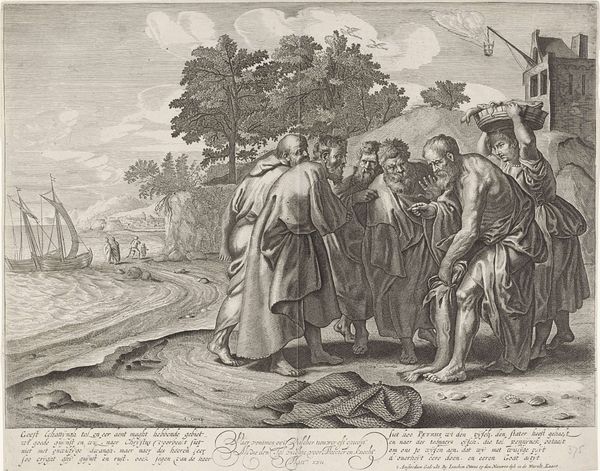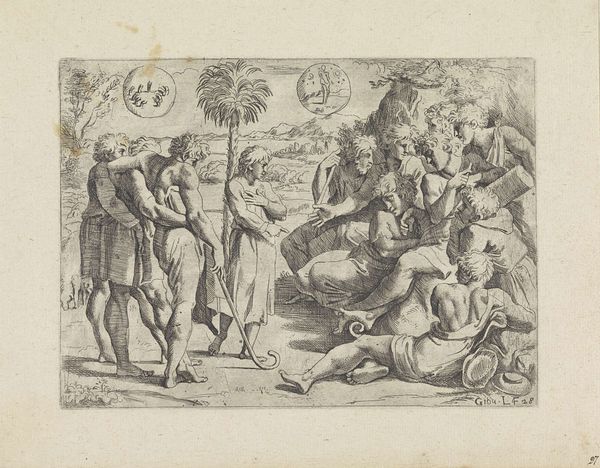
Meleager geeft de kop van het Caledonische zwijn aan Atalanta c. 1636 - 1670
0:00
0:00
crispijnvandeiipasse
Rijksmuseum
print, engraving
#
narrative-art
#
baroque
# print
#
figuration
#
history-painting
#
engraving
Dimensions: height 169 mm, width 238 mm
Copyright: Rijks Museum: Open Domain
Crispijn van de Passe the Younger created this engraving, Meleager gives the head of the Calydonian boar to Atalanta, in the 17th century. During this period in the Netherlands, the influence of classical antiquity was often used to explore contemporary social dynamics, particularly around gender and power. Here, we see a scene pulled from Greek myth: the hero Meleager presenting the head of a slain boar to the huntress Atalanta, who was part of the hunting party. Look closely, and you'll see the artist's focus on gender roles within this heroic context. Atalanta, often depicted as a strong, independent figure, is shown receiving the boar's head, hinting at her integral role in the hunt. While seemingly honoring her, Meleager's gesture also subtly reinforces societal expectations around women, who were often put in passive, receptive roles. The tension in this moment reflects how society was grappling with the place of women in positions of power. Van de Passe uses this classical scene to comment on the ongoing negotiations of gender and agency in his own time, inviting us to consider the complexities of honor and expectation.
Comments
No comments
Be the first to comment and join the conversation on the ultimate creative platform.
